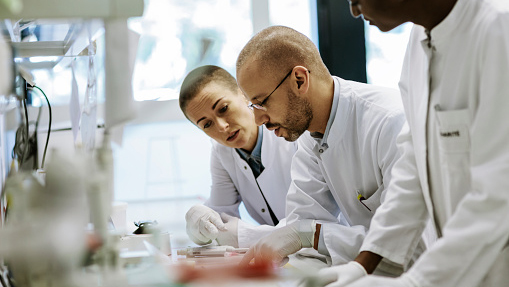Building Blood Bank Expertise: How Real-Life Case Studies Prepare New Technologists

In the field of transfusion medicine, training new blood bank technologists has become increasingly challenging since the loss of many experienced professionals during the COVID-19 pandemic. This has left many blood banks relying heavily on recent graduates who, while well-versed in manual techniques, often lack experience and knowledge with advanced technologies and automation systems.
The Challenge: Starting from Ground Zero
One of the most significant issues is the lack of practical, real-world experience among new graduates. While these technologists may be familiar with basic manual processes, their knowledge typically stops there. Automation, which is now a critical component in modern blood banks, is something they have little to no experience with. This knowledge gap requires extensive time and effort to bridge.
Building Competence through Case Studies
To address this knowledge gap, blood banks can develop a comprehensive case study program to train both students and new employees. These programs can be built around real-life cases encountered within the lab, offering trainees a practical and incremental learning experience.
The Process:
-
Identifying Relevant Cases: Each month, select the most interesting and educational cases that can offer significant learning opportunities. Analyze these cases and determine the patient’s background, diagnosis, treatment needs, and any transfusion challenges faced.
-
Mimicking Real-Life Scenarios: Transform the selected cases into case studies that simulate actual lab conditions. Present trainees with these scenarios and ask them to analyze them step-by-step. Ask the trainee to identify antibodies, determine their clinical significance, and decide on the appropriate tests and next steps.
-
Building Complexity: Build the training program with increasing levels of difficulty. Initially, trainees can work with simple cases involving a single antibody. As they progress, they can be introduced to more complex scenarios that include multiple antibodies, warm autoantibodies, dosage effects, enzyme treatments, and more.
-
Continuous Learning and Feedback: Each day, review cases from the previous 24 hours and discuss with residents and doctors. This daily review can ensure that trainees are continually exposed to new learning opportunities, helping to reinforce the skills they’ve acquired.
Advice for New Trainees: Always Prioritize Patient Safety
New trainees must always remember the importance of their work in saving lives. This emphasis on patient safety underpins the entire training program.
Conclusion
While many recent graduates enter the field with limited experience in advanced technologies and automation, a carefully structured training program—focused on real-life case studies and incremental learning—can help bridge this knowledge gap. By offering hands-on experience and continuous feedback, blood banks can equip their trainees with the skills needed to handle complex scenarios and ensure patient safety. Ultimately, investing in this type of training not only builds competence but also empowers the next generation of blood bankers to excel in their crucial, life-saving roles.